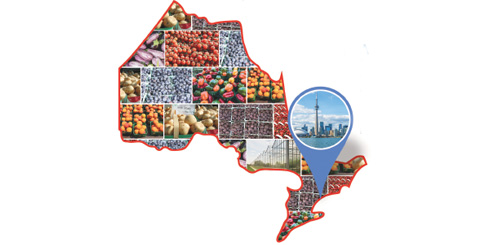“Some big companies can curtail this by buying futures,” Formusa posits, “but the small- and medium-sized companies can get caught losing margin if the Canadian dollar weakens within the few weeks before they pay for shipments. It really keeps us on our toes, and we need daily and accurate information to make the right decisions.”
He also says that all freight, even offshore loads, are typically paid for in U.S. dollars. “That’s a big component of cost, but freight rates have been fairly stable recently, both in sea container and in trucking—so that’s not a major concern,” Formusa shares.
A Cost of Doing Business
For some wholesalers, however, the exchange rate is just like any other cost: whether it is related to shipping, weather, or supply. It’s part of business and gets added in.
“The currency rate doesn’t really affect us too much,” observes Edwin Yu, manager at Season Produce, Inc. “It gets passed along, and it’s not like there are a lot of local alternatives that are cheaper. Most of the commodities we import—exotics like papayas and mangos—don’t have a Canadian equivalent.”
“The exchange rate is what it is,” states Triple Star’s Dinis. “Wholesale buyers will bring in produce no matter what the exchange is. It just gets passed onto the consumer. Where it does have an effect is on exports. The stronger the Canadian dollar, the less the United States will buy from Canadian shippers.”
Ongoing Renovations
Overall, sellers report good business this year even with shortages and a challenging exchange rate. The OFT, which moves more than 5.5 million pounds of produce annually, is in the midst of a long-term construction project for significant improvements to the 63-year-old facility. Once completed, the terminal will be one of the better-structured and maintained markets in North America.
“We’re still doing renovations on the east end of the property, creating roadways and parking areas, extending out the southeast dock to enclose that area, and enlarging our cold storage and waste separation areas,” says Bruce Nicholas, general manager of the Ontario Food Terminal Board. “The work is being staged, and we hope to complete everything in about two years.”
Previously, water, electrical, and storm sewers were updated, and Nicholas says that once fully renovated, the market should last at least another 30 years. It also houses both a wholesale terminal and farmers’ market area on the premises. Many other terminal markets separate commercial wholesale and farmers’ market stalls. Some say having a farmers’ market section dilutes business at the wholesale stalls; for others, it’s a matter of space and traffic flow.
“The typical thought process is that farmers are competing with wholesale,” explains Nicholas, “but in Toronto the wholesalers are mostly selling tropical, so the local produce doesn’t compete too much. There is a little competition, but our tenants buy off of the farmers and sell that wholesale as well. There’s a lot of goodwill between the two types of sellers.”



